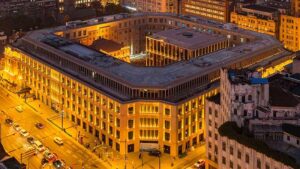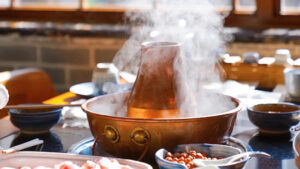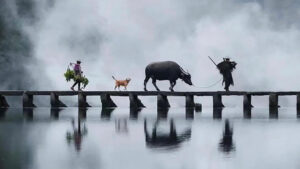Home » Beijing » Read before you visit Beijing must-see attractions
Among the many Beijing attractions, there are seven included in the world cultural heritage list. Beijing is the city with the most significant number of cultural heritage items in the world. Which Beijing attractions should be chosen by tourists for the first visit? And what tips are there to know before visiting? Let’s show you the details:
#1 Forbidden city
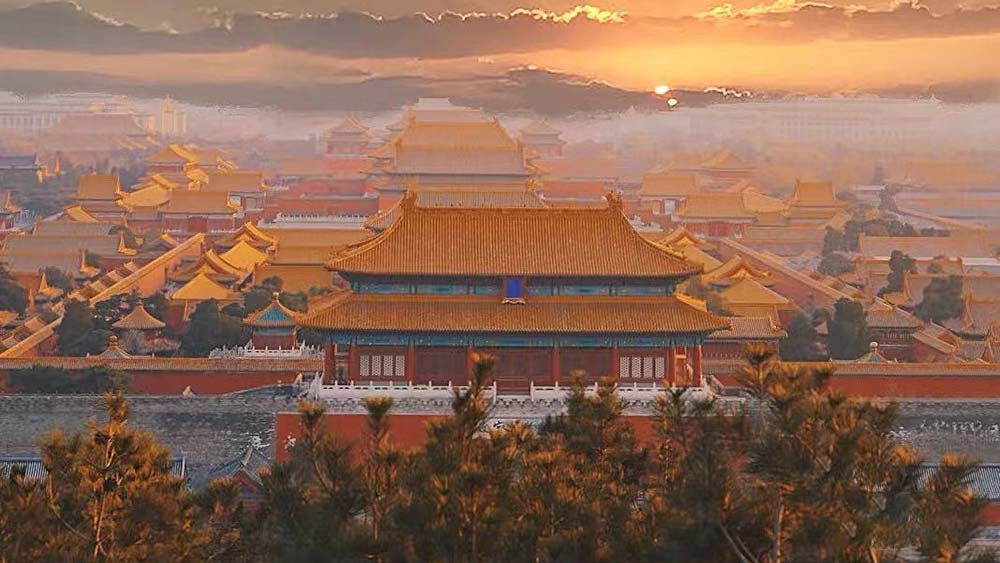
- Forbidden City is one of the three largest palaces in the world, where 24 ancient Chinese emperors lived.
- It is one of the world’s largest and most well-preserved wooden structures and ancient buildings. There are more than 70 large and small palaces and more than 9,000 rooms covering an area of 720,000 square meters. It took 14 years to build by 100,000 artisans.
- It is currently China’s most prominent ancient art museum, with more than 1 million cultural relics.
- One of the top Beijing attractions included in <The World’s Heritage List>
| Suggested tour time | 2 hours to a whole day |
| Address | No. 4, Jingshan Qian Street, Dongcheng District, Beijing |
| Opening hours | 08:30-17:00 (Peak season: April 1 to October 31) 08:30-16:30 (Low season: November 1st to March 31st of the following year) Closed on Monday, except on public holidays |
| Tickets | Buy on-site or book in advance to avoid long queues:https://gugong.ktmtech.cn/ |
| Suggested transportation | Taxi Subway (Line 1, East Tian An Men Station) |
| Suggested tour routes | 2 hours tour: Meridian Gate → Taihe Gate → Taihe Hall → Zhonghe Hall → Baohe Hall → Qianqing Gate → Qianqing Palace → Jiaotai Hall → Kunning Palace → Imperial Garden → Shenwu Gate Half-day tour: Meridian Gate → Taihe Gate → Taihe Hall → Zhonghe Hall → Baohe Hal → Jingren Palace → Yanxi Palace → Chengqian Palace → Jiaotai Palace → Kunning Palace → Qianqing Palace → Yongshou Palace → Yikun Palace → Chuxiu Palace →Imperial Garden → Shenwu Gate One-day tour: Meridian Gate → Wuying Hall → Wenhua Hall → Taihe Gate → Taihe Hall → Zhonghe Hall → Baohe Hall → Qianqing Palace → Jiaotai Hall → Kunning Palace → Yangxin Hall → West Six Palaces District → Imperial Garden →East Six Palaces District t→ Fengxian Hall (Watch Exhibition House)→ Ningshou Palace District (Treasure Exhibition Hall, Chinese Opera Exhibition Hall)→ Shenwu Gate |
#2 Great Wall of China

- The Great Wall of China is the world’s largest military structure, with a total length of more than 20,000 kilometers.
- The only work built by human hands on the earth can be seen from the moon.
- One of the top Beijing attractions Included in <The World’s Heritage List>
| Suggested tour time | A whole day |
| Address | Mutianyu Village, Bohai Town, Huairou District, Beijing (To avoid many tourists, it is recommended to visit the remote Mutianyu Great Wall (The Mutianyu section of the Great Wall)) |
| Opening hours | 07:30-18:00 (Peak season: March 16 to November 15) 08:00-17:00 (Low season: November 16 to March 15 of the following year) |
| Tickets | Buy on-site or book in advance to avoid long queues:http://www.mutianyugreatwall.com/homePage/toIndexEn. |
| Suggested transportation | Zanbus: http://www.zanbus.com/ChanPin/CPXinXi/MuTianYuEN Mubus: https://www.beijingmubus.cn/ Round trip tickets need to be booked in advance and paid for after boarding the bus. Great Wall tickets can also be purchased on the bus. It takes about 1.5 hours each way. |
| Best time to visit | The best time to visit the Great Wall is spring. In spring, everything recovers. The cherry blossoms around the Great Wall are blooming. The mountains and plains are full of pink and snow-white flowers. It is not recommended to visit in summer and winter. The temperature in summer is high, the sun is too strong, and the road on the Great Wall is too slippery in winter. |
| Tips for visiting | Take the cable car to the No. 14 watchtower. Walk from Watchtower No. 14 to 20, which is the most scenic section of the Mutianyu Great Wall. |
| Other suggestion | Please bring your ID, sunscreen, water, and snacks. |
#3 Temple of Heaven
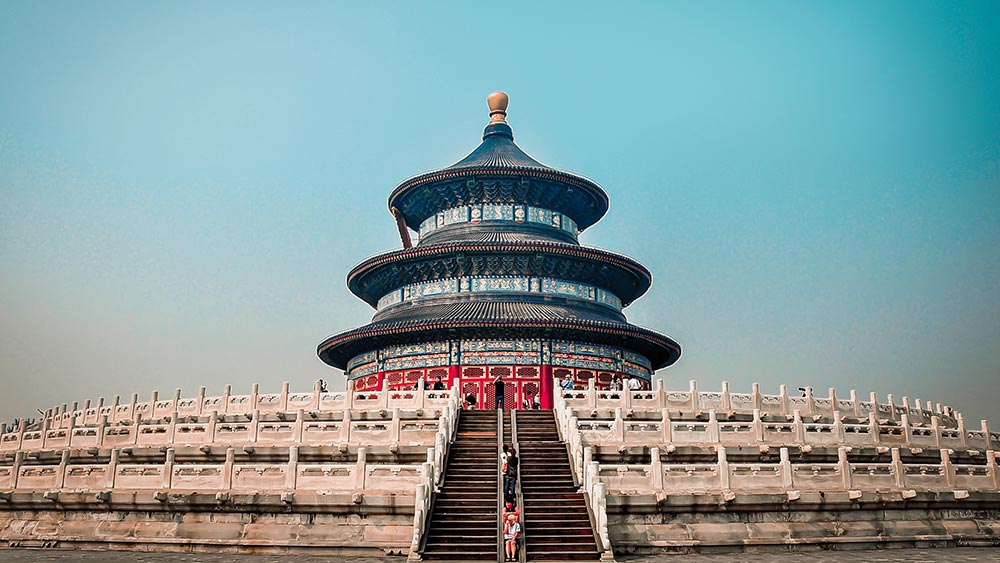
- The Temple of Heaven is an imperial complex of religious buildings. The Emperors of the Ming and Qing dynasties visited the complex for annual prayer ceremonies for rain and a good harvest.
- The architecture of the Temple of Heaven incorporates a lot of knowledge of mechanics, architecture, geometry, astronomy, etc. The details here are full of mysteries, which are amazing after digging deep. People ingeniously used acoustics in constructing the Echo Wall, the Three-tone Stone, and the Circular Mound Altar, which are the three major acoustic miracles. They are equally sighing the wisdom of the ancients.
- The Temple of Heaven was inscribed as a UNESCO World Heritage Site in 1998 and was described as “a masterpiece of architecture and landscape design which simply and graphically illustrates a cosmogony of great importance for the evolution of one of the world’s great civilizations…”. The symbolic layout and design of the Temple of Heaven profoundly influenced architecture and planning in the Far East over many centuries.
| Suggested tour time | Half-day |
| Address | No.A1 Tiantan Dongli, Dongcheng District, Beijing |
| Opening hours | 08:30-17:30 (Peak season: April 1 to October 31) 08:30-16:30 (Low season: November 1st to March 31st of the following year) Closed on Monday, except on public holidays |
| Tickets | Book in advance: 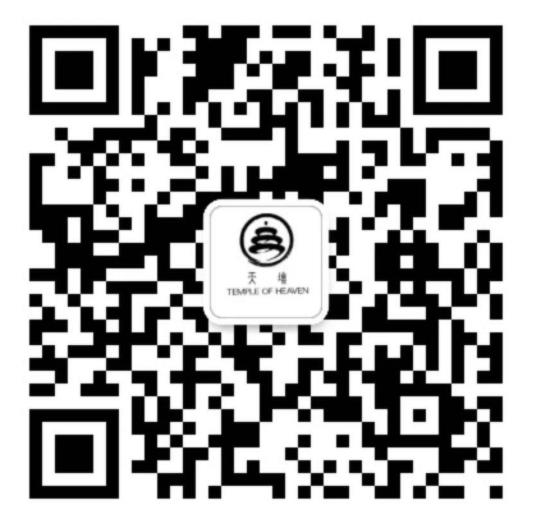 |
| Suggested transportation | Taxi Subway (Line 5, Temple of Heaven East Gate Station, Exit D); |
| Highlights | Must-see highlights: Huanggan Hall + Hall of Prayer for Good Harvests + Danbi Bridge + Imperial Heavenly Vault + Three tone stone + Echo wall + Circular Mound Altar Other highlights: God kitchen + Slaughter pavilion + The hall of abstinence + Kagura Summer + Chinese rose garden + Nine dragon cypress + Double ring Pavilion |
#4 Summer Palace

- One of China’s finest garden buildings among Beijing attractions– first built in 1750, largely destroyed in the 1860 war, and restored on an original basis in 1886. Summer Palace is a masterpiece of Chinese garden design. Combining the natural landscape of hills and open waters with an artificial landscape of pavilions, halls, palaces, temples, and Bridges forms a harmonious ensemble with outstanding aesthetic value. The Summer Palace embodied the philosophy and practice of Chinese garden design and played a vital role in developing cultural forms throughout the East.
- One of the top Beijing attractions included in <The World’s Heritage List>
| Suggested tour time | Half-day |
| Address | 19 Xinjian Gongmen Road, Haidian District, Beijing |
| Opening hours | 08:00-18:00 (Peak season: April 1 to October 31) 08:30-17:00 (Low season: November 1st to March 31st of the following year) Closed on Monday, except on public holidays |
| Tickets | Buy on-site |
| Suggested transportation | Taxi Subway (Line 4, Xiyuan Station; Line 16, Xiyuan Station) |
| Suggested tour routes | Enter the park at Donggong Gate → Renshou Hall → Yulan Hall → Yiyun Hall → Leshou Hall → Long Corridor → Go up the hill from Paiyunme to the Buddha Xiangge → Wisdom Sea → Down the hill to visit Suzhou Street on the north side, Go west to Marble boat and take a boat to Nanhu Island → Seventeen-hole Bridge → Go north to Wenchang Yuanguan Cultural Relics Exhibition → Go out from Donggong Gate |
#5 Lama Temple (Yonghe Temple)
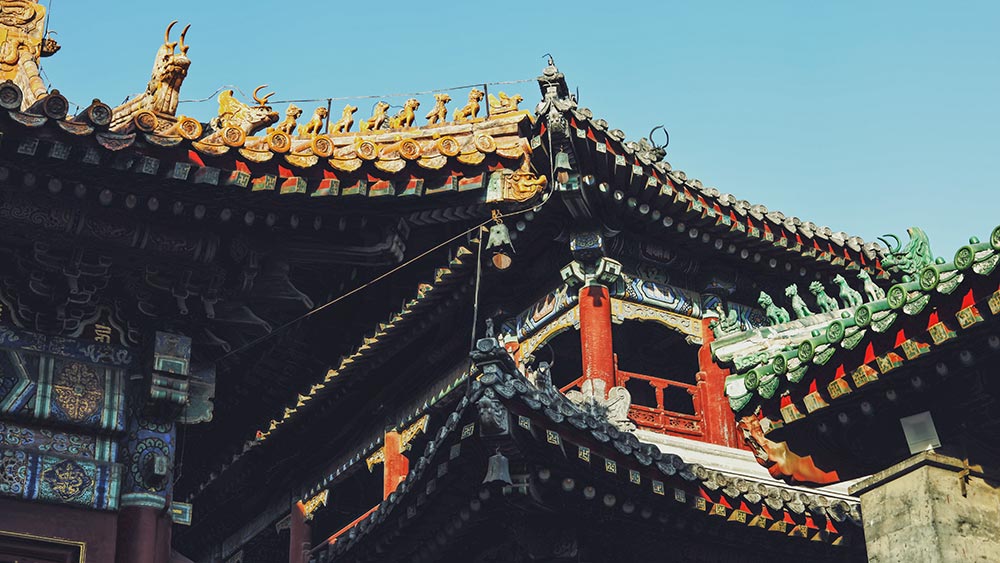
- Lama Temple in Beijing attractions is the largest and best-preserved Tibetan Buddhist monastery in Beijing.
- It used to be the Royal Mansion, with magnificent architectural style.
- Treasures in the palace: The five hundred Arhats, the Sandalwood Giant Buddha, and the nanmu Buddhist niches. The Sandalwood Giant Buddha is the Madara Buddha in Wanfu Pavilion. This giant Buddha was carved from the trunk of a white sandalwood tree. It is 26 meters high, 18 meters above the ground (8 meters underground), 8 meters in diameter, and weighs about 100 tons. It is a giant unique wooden statue in China.
| Suggested tour time | 1 to 2 hours |
| Address | No. 12, Lama Temple Street, Dongcheng District, Beijing |
| Opening hours | 09:00-16:30 (Peak season: April 1 to October 31) 09:00-16:00 (Low season: November 1st to March 31st of the following year) Closed on Monday, except on public holidays |
| Tickets | Buy on-site |
| Suggested transportation | Taxi Line 2 or Line 5, Lama Temple station |
| Attention⚠️ | Don’t wear ‘sunglasses’; It is not allowed to take photos of Buddha statues, which shows disrespect to the Buddha. |
#6 Confucius Temple and Imperial College Museum

- Confucius Temple and Imperial College Museum were built in the Yuan Dynasty and combined with the ancient “Left temple right study system.” They were used as places for the emperor to worship Confucius and the central government’s highest institution of education and educational administration.
- As the founder of Confucianism, Confucius was listed by UNESCO as one of the top ten cultural celebrities in the world (followed by Plato, Aristotle, Copernicus, Newton, Darwin, Bacon, Aquinas, Volt Ertai, Kant)
- Imperial College Museum was a national institution in the Ming and Qing dynasties, and it was also where the emperor himself taught in the past.
| Suggested tour time | 2 hours |
| Address | No. 13-15, Imperial College Museum Street, Dongcheng District, Beijing |
| Opening hours | 08:30-18:00 (Peak season: May 1 to October 31) 08:30-17:00 (Low season: November 1st to April 30th of the following year) Closed on Monday, except on public holidays |
| Tickets | Buy on-site |
| Suggested transportation | Taxi Line 2 or Line 5, Lama Temple station, 15 minutes walk from the station. |
#7 Hongtongs
Hutong is a narrow street or alley usually associated with cities in northern China. In Beijing, hutongs are alleyways formed by Siheyuan lines, which are traditional Siheyuan houses. Hutong is an essential cultural element in Beijing. Due to Beijing’s long history and status as the capital of six dynasties, almost every hutong has anecdotes, some of which are even related to historical events. Unlike the palace life and elite culture represented by the Forbidden City, the Summer Palace, and the Temple of Heaven, Hutong reflects the culture of grassroots Beijingers. Hutongs are residential areas that are still the center of old Beijing. Therefore, Hutong is the place that best reflects the life scenes of ordinary Beijing people among all the Beijing attractions.
. Nanluoguxiang Hutong
| Transportation | Subway (Line 6 or Line 8, Nanluoguxiang Station) Taxi |
| Recommended reason | Nanluoguxiang is one of the oldest neighborhoods in Beijing, 25 old city protection areas, and the country’s only entirely preserved Hutong in the Yuan Dynasty. It is more than 740 years old and is a complex of buildings earlier than the Forbidden City! In the past, many wealthy people lived here. Nanluoguxiang is a comprehensive block integrating leisure and entertainment, private snacks, bars and coffees, and themed shops. |
. Yandai Xie Street
| Transportation | Subway (Line 8, Shichaha Station) Taxi |
| Recommended reason | With a total length of 232 meters, Yandaixie Street is also one of the oldest commercial streets in Beijing. The Qing Dynasty mainly used smoking utensils, framed calligraphy, painting, and selling antiques. It is full of ancient and unique market charm. On New Year’s Day, the whole street is full of lanterns and colorful New Year decorations! |
. Dashilan
| Transportation | Subway (Line 2, Qianmen Station) Taxi |
| Recommended reason | Although many time-honored shops in Beijing have mostly closed and changed their names with the changes of the years, most of the existing ones can be found in the Dashilan. This is not only a commercial street but also a rare gathering place for food. It is recommended to choose a famous Beijing roast duck restaurant here. |
#8 National Museum of China
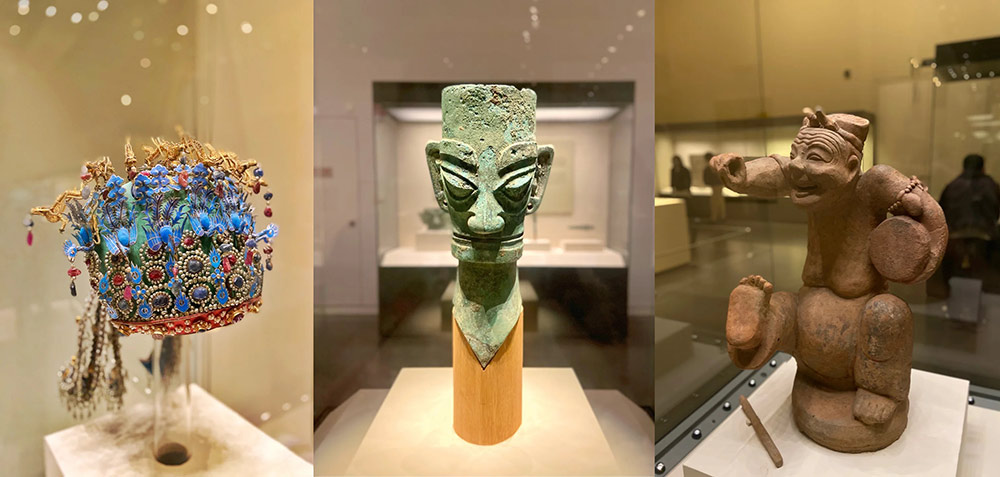
The museum with the largest single building area in the world is one of the museums with the richest collection of cultural relics in China. The total construction area is nearly 200,000 square meters, the collection of more than 1 million pieces and 48 exhibition halls. The National Museum of China is the best Beijing attraction to experience the development of China’s 5000 years of civilization.
| Suggested tour time | 4-12 hours |
| Address | Eastside of Tiananmen Square, 16 East Chang’an Street, Dongcheng District, Beijing |
| Opening hours | 09:30-17:00, Closed on Monday, except on public holidays |
| Tickets | Free, Real name reservation is required https://ticket.chnmuseum.cn/yuyue/index |
| Suggested transportation | Taxi Subway (Line 1, Tiananmen Square station) |

